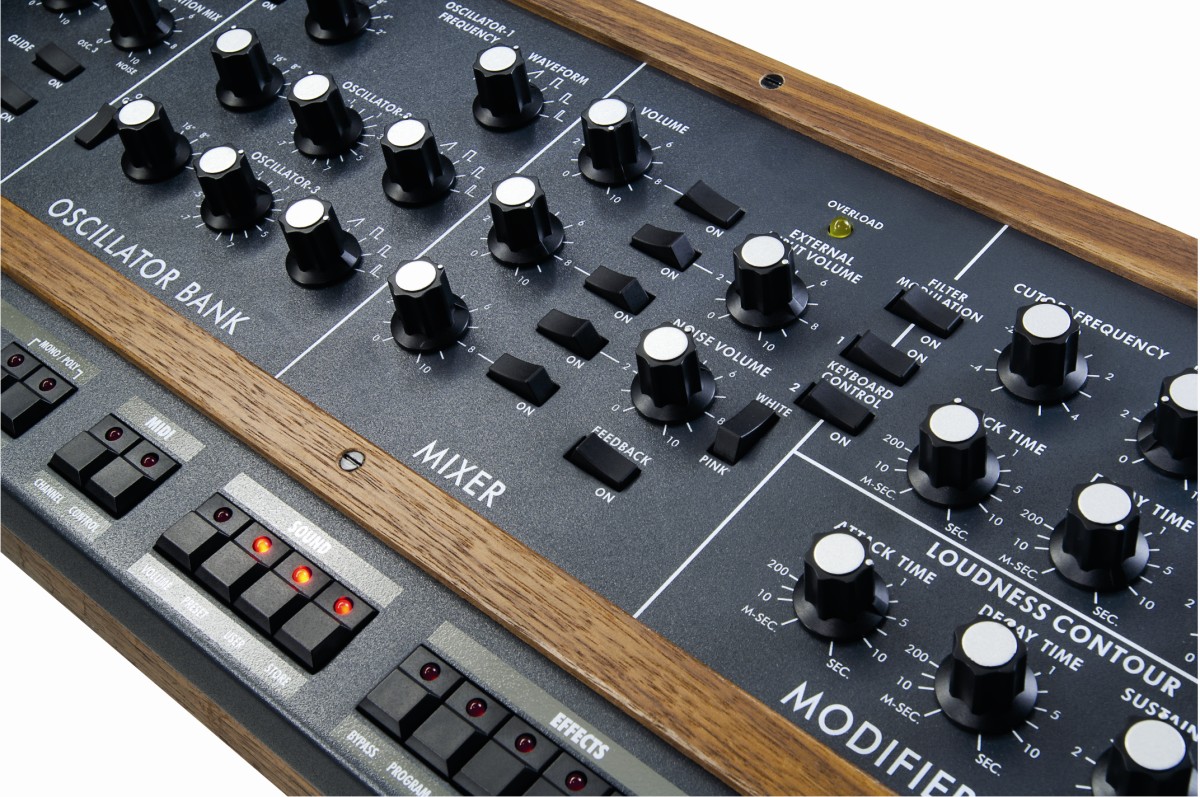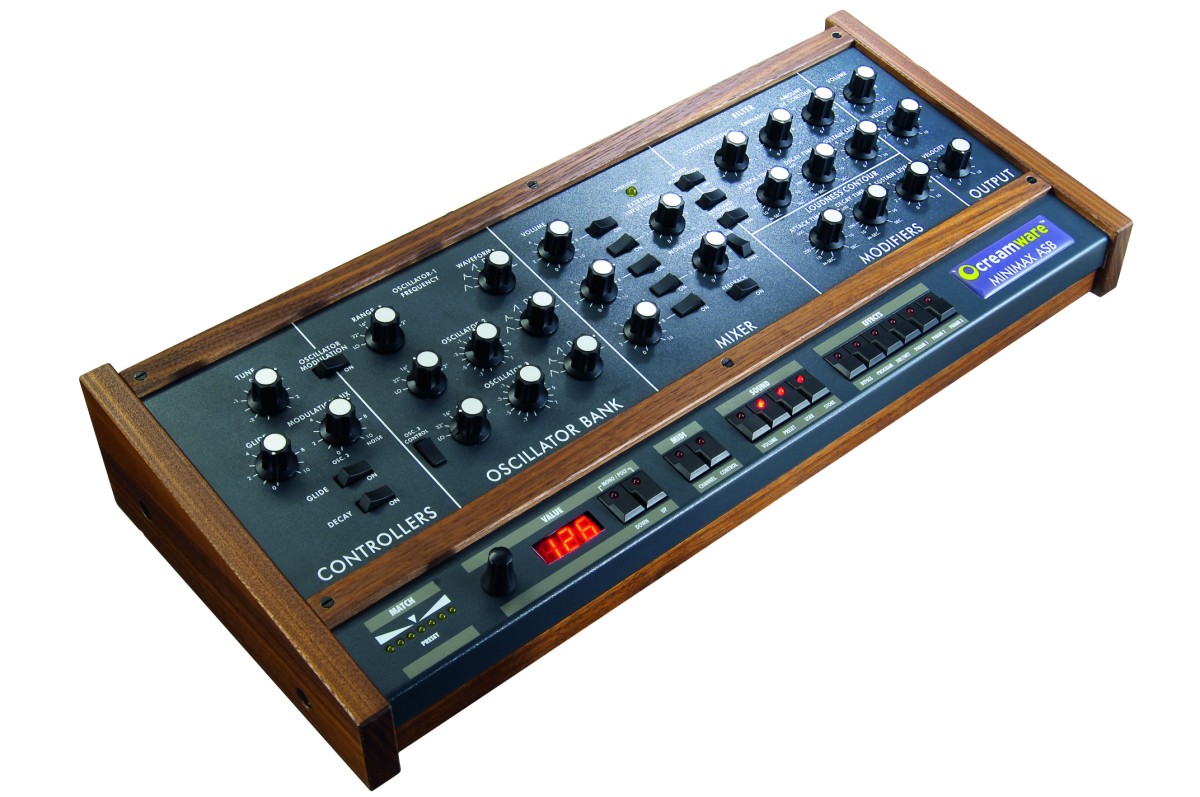MusicRadar Verdict
Creamware turns software into hardware with great success. A cracking Minimoog clone.
Pros
- +
Great vintage stylings. Excellent tone. Fun to use.
Cons
- -
Slightly limited in that its just a Moog in a box.
MusicRadar's got your back

Creamware Minimax ASB

Creamware Minimax ASB

Creamware Minimax ASB
As a software system, Creamware's Scope perhaps did more to usher in demand for digital recreations of analogue synths than any other single product.
While it was expensive and not always stable, its sound was immediately impressive. At a time when virtual synths sounded very digital, Scope took giant strides to bring back the warmth we associate with classic old boxes.
In a sense, it's almost like Creamware are coming full circle here, by bundling up their existing Minimoog clone as a hardware, desktop synthesizer - the Minimax ASB.
First impressions
Physically, the Minimax is ruggedly built and will immediately strike a chord with Virus owners, who'll be familiar with this type of wedge-shaped design.
The controls match those of the original Minimoog and, in a sense, there's less clutter, as additional functionality is accessed primarily through a series of buttons below the main fascia.
Round the back you'll find the usual suspects - three MIDI ports, stereo input/output, a 12V AC adaptor port with power on/off rocker switch and a USB connection to connect the Minimax straight to your computer. Laptop DJs rejoice!
This synthesizer delivers a sound that's indistinguishable from the original Minimoog and the familiar combination of warmth and punch greet you straight out of the box.
The oscillators ooze character and the filter can create anything from the sublime to the ridiculous. Dial up the three oscillators, use the mixer section to blend them, then add a little white noise for some grit.
You'll be shaping sounds to your heart's content and stumbling over soundalikes from various artists all the while.
There's something very pleasing about having this tweakability right in front of you. You can jam away, playing one-handed while using your spare hand for editing.
This is much more gratifying than using a mouse to make changes, as it's lovely to have real controls to grab hold of. It makes for a very playable instrument, and we'd have no qualms about adding a Minimax to a live set-up.
New additions
In many ways, Minimax feels like the purist's choice. Even if you're old-school enough to think that analogue synths should occupy entire rooms of your house, this won't offend you.
The main reason for this is that Creamware haven't elected to pack loads of new tricks into this box alongside the Minimoog bits - this really is a Moog with a couple of additions.
These effectively amount to some polyphony - with up to six voices available - and a very useable effects section. This is accessed via the six Effects buttons below the synth's Mixer section.
The first button acts as an effects bypass, the second selects the effect type from five variants, and the third acts as a dry/wet effects mixer control.
The last three buttons, labelled Param 1, 2 and 3 allow you to tweak three parameters relevant to the currently selected effect.
These might include delay feedback amounts, or the rate of 'ping-pong', for example. All six buttons have a bright LED built in, so monitoring your current effects setup is a breeze.
Once you've made a sound, you can save it to one of 128 user locations. Scrolling through these sounds and the presets is as simple as rotating the knob to the left of the main LED readout, but be aware that this is Minimax's only display screen.
There's no LCD with sound names here, so you might want to keep your own list as you make them, for fear of over-writing a moment of programming genius.
Another function worthy of note is the input stage, which allows you to route any signal into the Minimax and then use its filter and envelope stages to process it.
There's an external input volume knob that acts as a gain control for this operation and a bright yellow LED to warn you if you reach overload.
Conclusion
This synthesizer oozes charm and class and its pure Minimoog styling reeks of quality.
As Creamware have remained so true to the Minimoog's roots, don't expect to be able to use this synth as your main sound source, unless your name is Walter or Wendy.
However, if you want to get hold of a dependable, physical clone that sounds phenomenal yet doesn't weigh as much as your Grandma, look no further.
Whether in the studio or onstage, there's no doubt that Minimax ASB will bring something special to your sound.
Future Music is the number one magazine for today's producers. Packed with technique and technology we'll help you make great new music. All-access artist interviews, in-depth gear reviews, essential production tutorials and much more. Every marvellous monthly edition features reliable reviews of the latest and greatest hardware and software technology and techniques, unparalleled advice, in-depth interviews, sensational free samples and so much more to improve the experience and outcome of your music-making.
“A synthesizer that is both easy to use and fun to play whilst maintaining a decent degree of programming depth and flexibility”: PWM Mantis review
“I feel like that song had everything we needed to come back with”: Bring Me The Horizon’s Lee Malia on Shadow Moses, its riff and the secrets behind its tone, and why it was the right anthem at the right time
“I said, ‘Are we sure we can write a song about death?’”: The story of Mike + The Mechanics' classic No.1 The Living Years










